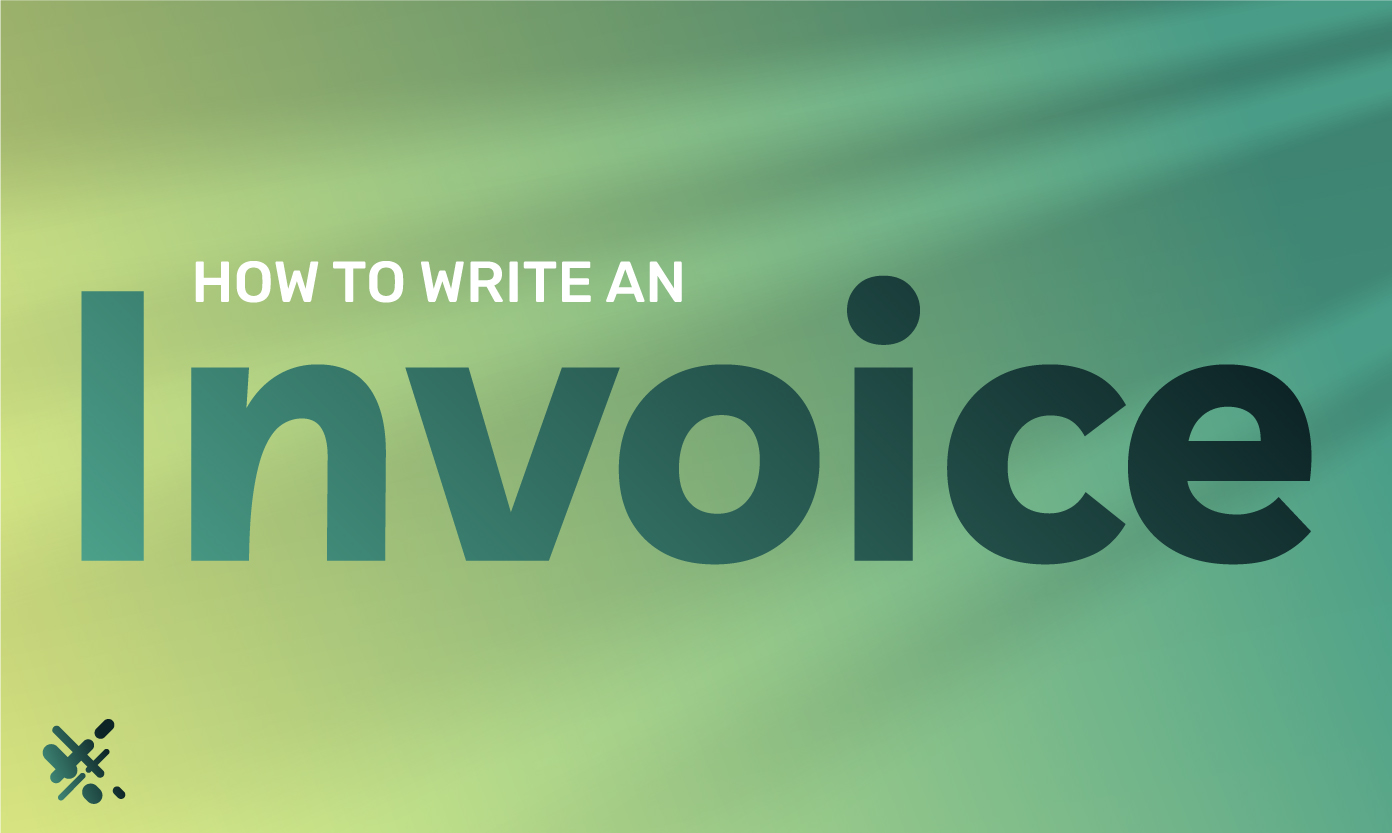Running a successful business often requires careful bookkeeping so you can track every penny moving into and out of your business. A big part of that bookkeeping for many businesses involves invoicing. However, knowing how to write an invoice or deciding what exactly to include can sometimes be confusing. If you put too much information, you may confuse your customers. You’re also wasting time and effort with each invoice.
But too little information is also a problem. Customers may not be able to find the data they need, and you may have trouble when looking up past invoices. The goal is to find the perfect sweet spot that contains all the needed information for your business and your customers without wasted space.
Below, we’ll cover the nine essentials that will show you how to prepare an invoice for payment.
What is An Invoice For?
An invoice is beneficial to both the customer and the business. It’s a written record of how much money is either paid or is still due for a given product or service. Invoices can be for a one-time sale or ongoing services, such as from a supplier to a manufacturer.
An invoice allows the sender to keep a record of their cash flow. By checking invoices paid and those still outstanding, a business can forecast its cash flow, which is an essential accounting function.
But besides just accounting, invoices can also protect a business as well as customers. Clear and detailed invoices can protect the business if a dispute ever arises over money paid. A business with poor invoice tracking and record keeping may have difficulty defending itself in disputes like this.
Another reason can be legal. Some industries and some states require businesses to write an invoice. Some invoices require specific information in certain cases. This can vary by state and by industry, but not having the proper invoices can have certain legal implications. This is another reason to make sure your invoices are complete and accurate.
What Businesses Use Invoices?
While most business-to-consumer (B2C) businesses don’t always offer invoices, a majority of business-to-business (B2B) companies will.
However, B2C companies that deal with higher-priced items or offer services may still need to issue invoices to their customers. Not to mention, if a customer ever asks for an invoice, a business should be able to comply, even if it’s not their normal procedure.
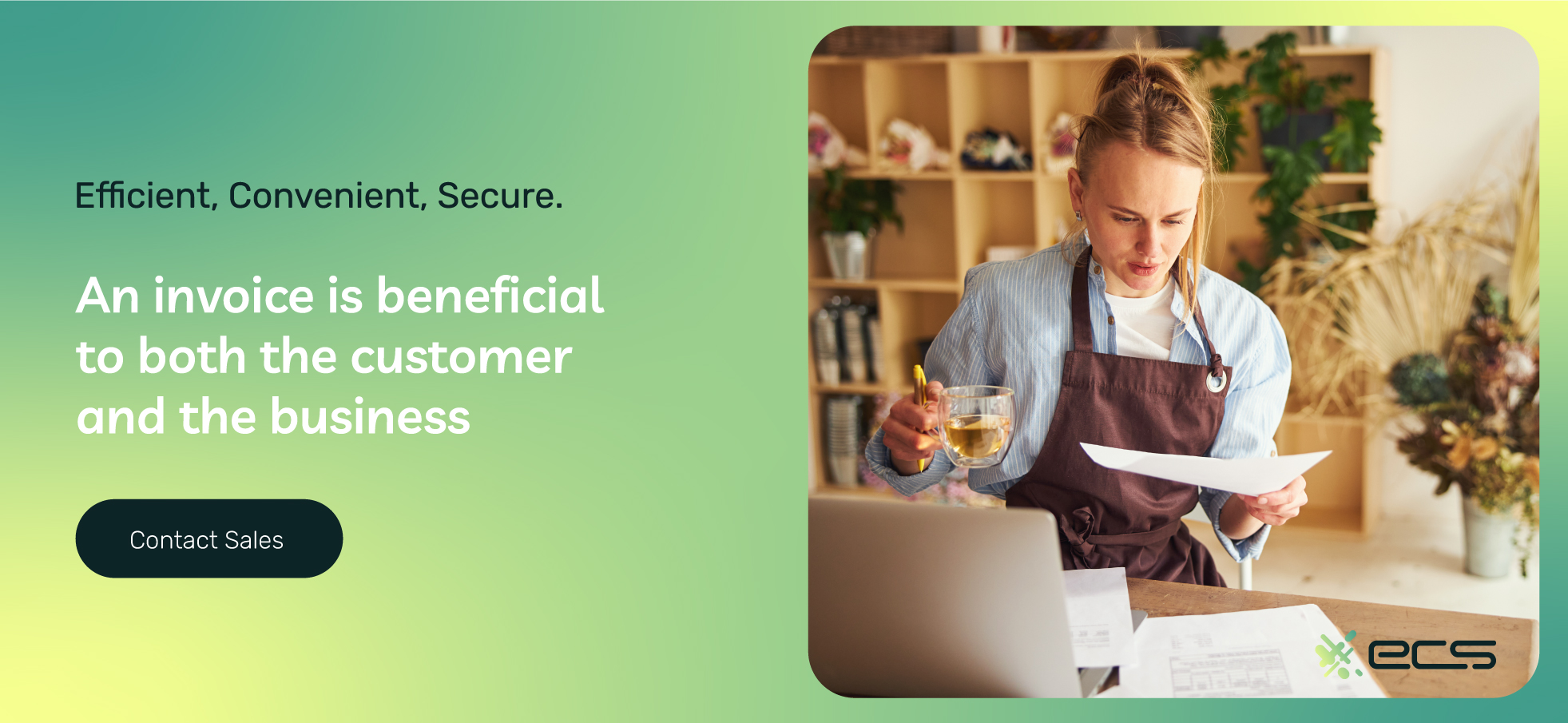
How To Make an Invoice For My Business
Now that we’ve emphasized the importance of an invoice, let’s delve into the specific inclusions required with how to invoice. You should use this as a starting point, and depending on your business, you can add to this list as needed for your own invoice accounting.
- Document Title
This may seem simple, but there are plenty of invoices that leave this off. Your document should have the word “Invoice” clearly labeled and toward the top of the page. In some cases, even a contrasting color helps.
This helps alert customers that the document is in regard to payment and that they should pay attention. This is especially true for invoices that have a balance due. You want your customers to take action as soon as possible after receiving the invoice. Customers may ignore a poorly labeled invoice, not understanding what it is.
- Your Full Business Name and Your Customer’s Full Name
Display your business name and full contact details clearly at the top of the invoice. This helps your customers know exactly who it’s from with just a glance. Make sure to also include your phone number or other methods of contact. If your customer has any questions, they can take care of it quickly with the invoice in hand.
Also include your customer’s full name, address, and contact information. This makes retrieving old invoices easier for your own record-keeping.
- Date of Invoice
Include the date you created the invoice. The date of purchase may be different from this date. The date the product or service was delivered may also differ from the invoice date.
In summary, your invoice may have three dates. The date at the top of the invoice should indicate when you created it. You should try to send the invoice the same day you created it.
Dating invoices with one date and then sending them days later will irritate your customers.
- When Payment Is Due
Just as important as the invoice date is the payment due date. Clearly mark these dates and generally place them in the same area, often right below one another.
If there is no agreement between the two companies, an invoice is generally due 30 days after the invoice date.
However, you can have different agreements with your customer that stipulate when invoices are due. So make sure to include the correct due date for each customer if they vary.
- Invoice Number
Every invoice sent must have a unique invoice number assigned to it. These numbers must follow a common numbering convention and must also be in sequential order. You don’t want any gaps in invoice numbers, as that can cause bookkeeping and even tax-related issues down the road.
You can use a numbering scheme as simple as starting with 001 as your first invoice. However, you will likely want to use a different format that includes other important information.
For example, many businesses choose to include the year or a code referring to the year at the start of the invoice number. Some may also employ internal codes to categorize various types of invoices.
The choice is yours, but the key is to be consistent because changing the format can cause accounting problems.
- Products or Services Sold
How detailed this section is will depend on your industry. Provide a product or service description that includes enough information to prevent any confusion regarding what was delivered to the customer.
This also means trying to avoid any internal codes or short names that the customer may not be aware of. Try to be as descriptive as possible to avoid any disputes or confusion.
This can be tricky with services as the description may need to be more complex. So, if you provide services, you may want to allow for extra room in the description area. You can use this extra room to describe any aspect of the service that was omitted or specify any additional services included.
For some products, consider including the serial numbers of the items being sold. For general items, this likely won’t be necessary. Items with higher value or items that require tracking will likely require a serial number to accompany the product description.
This can also help with any customer service requests related to the item.
- Quantity And Price Information
When selling products, you must specify the quantity in a separate area of the invoice. Try not to include the quantity only in the product description area. Keep these two pieces of information separate for easy viewing.
You can then include pricing information in a separate area. Make sure to indicate if the price is per item or combined. Businesses generally list the per-item price, and they calculate the total at the end of the invoice.
Make sure to include or note any discounts or price changes in the description.
- Date of Delivery or Services Rendered
This is different from the date of the invoice. This date should be when the items were shipped or delivered. For services, it’s the day the services were delivered. If you used invoices before services are rendered, such as when bidding, include the expected start date for the work.
Generally, people refer to sending an invoice in advance as a pro forma invoice, and we will provide more detailed descriptions of those later.
Try to include shipping information, if possible, for items that you ship. Popular shipping software can integrate with many invoice programs. This allows you to merge your product descriptions with shipping tracking numbers.
Having this all in one place makes dealing with disputes or issues much easier.
- Subtotals and Total Amount Due
The subtotal and total for the invoice should be separate. The subtotal will be the amount of just the products or services. This is before any sales tax, shipping, or other fees.
The total will be the final amount after you have added all additional fees.
Include any discounts in this area. List any discount as a separate item. For example, if you offered a customer a 5% discount on the entire order, you list this as an item and then make the deduction from the subtotal.
If you apply a discount to a single item in an order, you should include the discount in the product description, along with the new price after the discount.
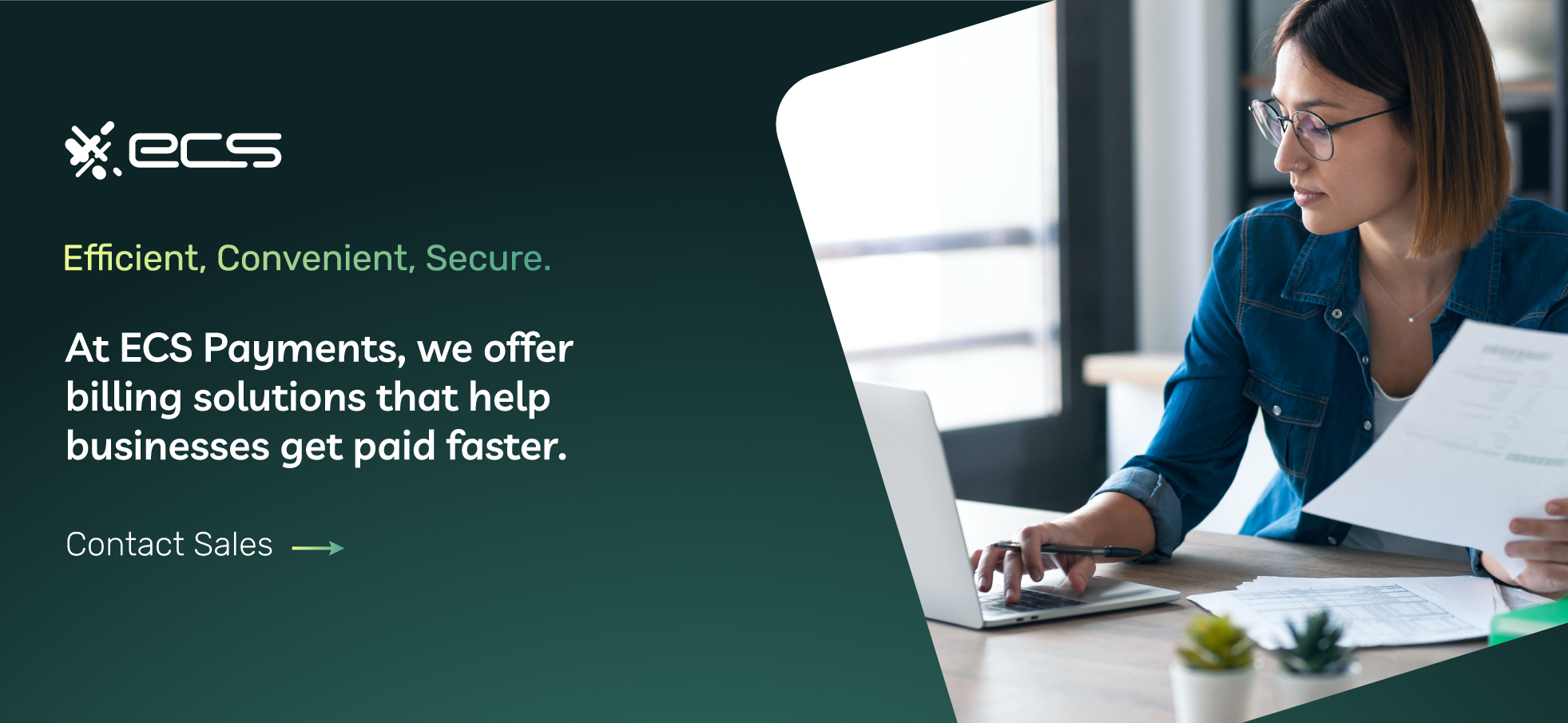
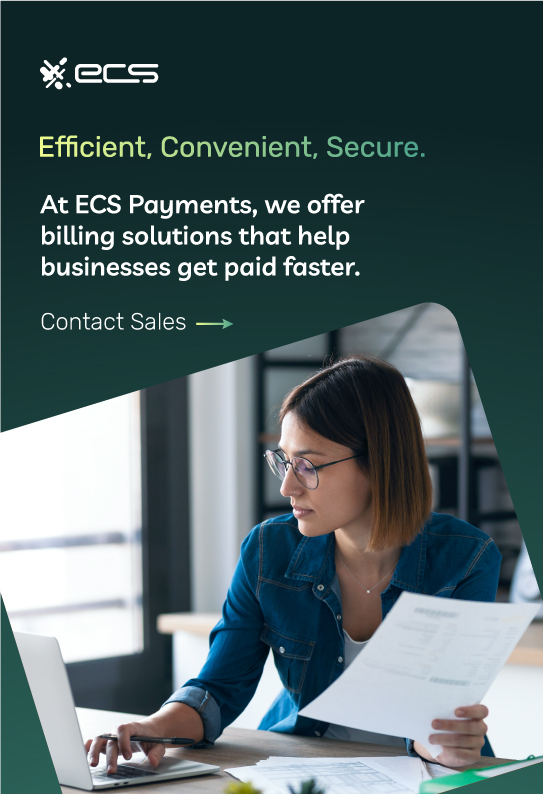
Additional Custom Invoice Options
If your business operates under contract or fulfills contracts, you may need to format your invoices in a specific way.
This is common with government contracts or other services provided by vendors. When dealing with contracts, check if there are any specific invoicing requirements and be prepared to create custom invoices for those customers.
Invoice Payment Terms
Every business will have different payment terms. Businesses can also have different terms for different customers depending on contracts or other agreements.
List your payment terms on the invoice. Generally, the bottom of the invoice includes these terms. If there is no room, businesses can also include them on the reverse side of the invoice.
Below are some of the more common payment terms found on invoices.
Net 30
This is the standard for most basic invoices, and it simply states that the invoice is due 30 days after the invoice date. When using this, it’s important to have an accurate invoice date and send out the invoice in a timely manner.
Although 30 days is generally the standard, the amount of days can be anything you specify or agree to with the customer. For example, net 60 would mean the customer has 60 days to pay.
Payment in Advance (PIA)
You use a PIA invoice when requesting payment either before delivery or before performing a service. You can either ask for the full amount or a partial amount, similar to a down payment or retainer.
End Of Month (EOM)
Similar to net 30 days, this requires that payment is due at the end of the calendar month. EOM terms typically entail sending the invoices near the 1st of the month or just before.
15 MFI
This payment term means that payment is due on the 15th of the month. You can change the number to other dates. For example, 17 MFI is also a popular choice and means that payment is due on the 17th of the calendar month.
Cash On Delivery (COD)
This can be common in freight situations. It’s also sometimes common when delivering commodity goods with a short shelf life.
Late Fees
You should clearly explain your late fee policy on your invoice. State or other agencies regulate some late fees, and it’s important to note this. These can also vary by industry and may depend on who your customers are.
Similarly, if you don’t disclose your late fees and they try to apply them later, they may not be enforceable, and the customer could be eligible for a refund and other compensation.
Recent studies reveal that 20% of invoices are overdue by two weeks, while payment for 33% take over a month, and an additional 20% remain unpaid for sixty days or more.
Overall, it’s important to clearly disclose all possible late fees and then ensure they are all compliant with any state or other regulations.
Different Kinds of Invoices
All invoices may appear essentially the same, but a few categories separate invoices.
Below, we’ll go over the most common invoice types and explain when and how they are each used.
Pro Forma Invoice
Pro forma invoices communicate the costs of a project or other large purchase beforehand. This can occur at the bidding stage of a project or before a formal agreement is made.
A pro forma invoice outlines the costs involved in the project or delivery of products. However, the customer doesn’t need to pay for it, and there isn’t a due date. However, the offer and pricing may only be valid for a specific period.
If the pro forma invoice includes estimated prices, then it should incorporate language describing that prices may change.
Interim Invoices
You can think of interim invoices like installment payments. Sometimes, one business extends credit to another, allowing them to pay for goods and services over time.
Each installment payment has its own invoice. Besides helping the customer, these can also help the business by allowing them to receive partial funds earlier.
In industries such as construction, a builder or contractor may not be able to front the money for an entire project without receiving some funds along the way.
Recurring Invoice
Businesses use these for recurring or regular services. Businesses also use them for recurring product deliveries.
A common example would be a pest control company that has a restaurant as a client. The restaurant will receive a monthly invoice from the pest control company for services rendered.
Businesses generally use these when the amount of the invoices doesn’t change much.
Credit and Debit Invoices
Businesses use these to correct errors they made in other invoices. For example, if a business received an overcharge in a previous invoice, they would receive a credit invoice. The credit invoice would indicate the amount of money refunded.
Similarly, a business employs a debit invoice when it has received an insufficient payment from a customer for a product or service. If the customer adds additional products or services, you can send a debit invoice. The debit invoice will show the additional amount the customer now has to pay.
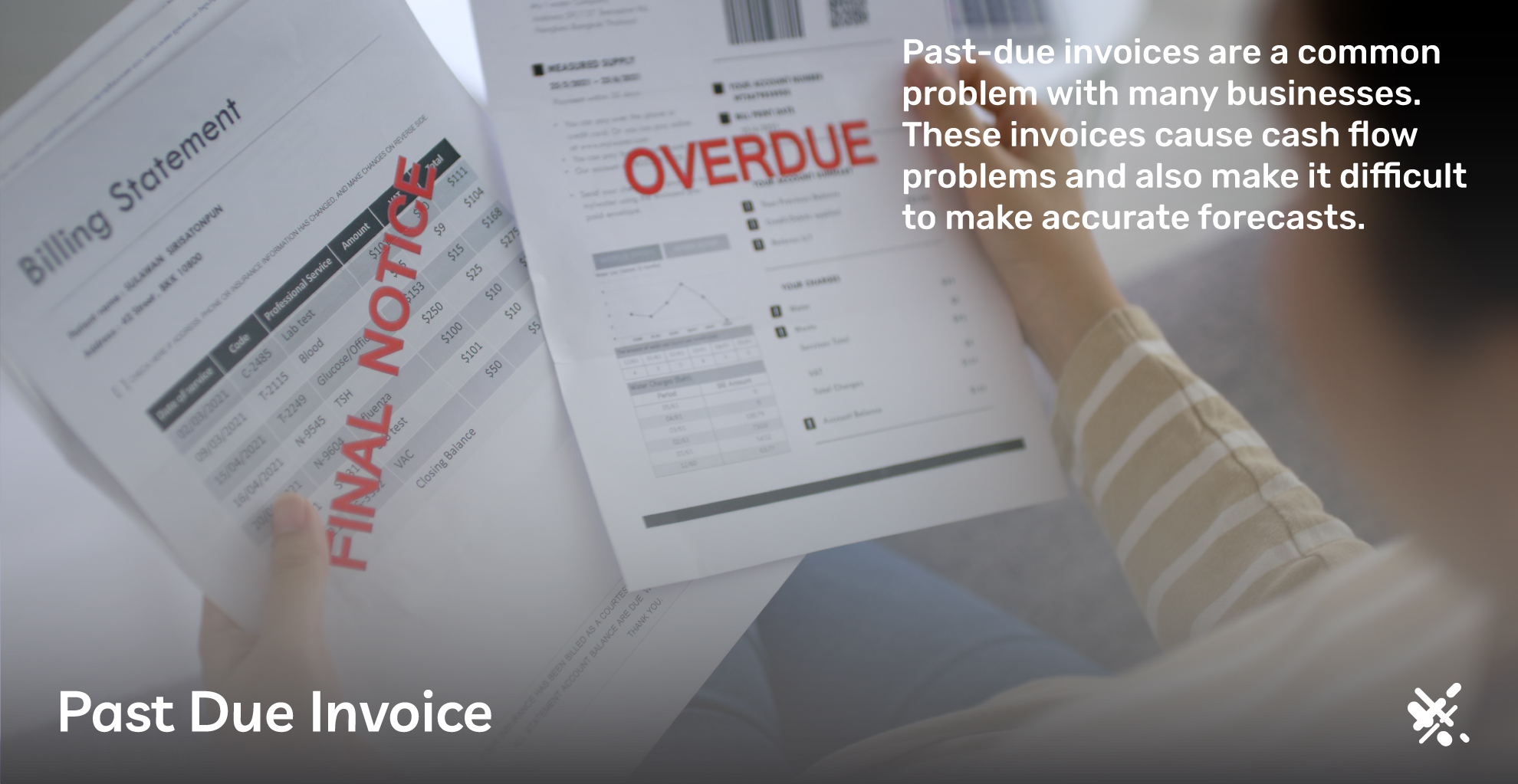
Past Due Invoice
If a business does not receive payment by the due date, including any grace period, they will send a past-due invoice.
Some businesses choose to use a separate template for their past-due invoices. The reason is that they include extra language that may be helpful to the customer. This can include how to schedule new payment terms or who to call with any questions.
Past-due invoices are a common problem with many businesses. These invoices cause cash flow problems and also make it difficult to make accurate forecasts. Not only that, they add costs and labor to the original order.
As a business, you will want to do everything possible to avoid sending past-due invoices. One way to achieve this is to start with a strong invoice that contains all the information needed and is easy to read and understand.
A customer can set aside confusing or vague invoices, which can then result in them not paying on time.
How To Send An Invoice To A Company
Now that we’ve gone over how to write an invoice, let’s go voer how to send an invoice.
In the past, most businesses sent invoices through the mail. An employee would usually create the invoices once per month and send them out. Some businesses still operate this way, but it’s costly and time-consuming.
A shocking 65% of businesses spend an average of 14 hours each week on administrative tasks regarding payment collections. Newer methods, such as electronic invoices and automation, can speed up your invoicing process and also save your business money.
Electronic Invoices
Businesses are increasingly favoring electronic invoices, which enable them to receive faster payments. Customers also prefer these as they can manage their invoices on a device where they do all of their other accounting or payments.
Most business accounting software will have the ability to create a billing invoice to send electronically. If your business uses CRM software such as Salesforce or Zoho, these will also have the ability to send invoices directly in the software.
You can also automate most of this using a CRM, saving you time and money compared to manual invoicing.
Another area of cost savings when it comes to invoicing is to integrate your business software with your payment processing. When integrating these two systems, a business can send invoices that include secure payment links.
The payment links will contain all the payment details for the customer. All the customer does is confirm the payment and amount. There can also be different payment options, such as credit cards or ACH payments.
This invoicing workflow and automation enable businesses to collect payments more quickly, helping them get paid faster. It also reduces the number of past-due invoices and expenses that can come with those.
Is an Invoice The Same As A receipt?
Some new business owners often ask if an invoice is the same as a receipt. In some ways, they are, and they have overlapping information included. Generally, businesses or customers use a receipt to demonstrate that they paid for and received goods or services.
You can use a receipt in conjunction with an invoice. One example is when a customer uses a company credit card to pay an invoice. The receipt for the credit card transaction shows that the customer has paid the invoice amount.
What’s the Difference Between an Invoice and a Bill?
Businesses and customers often use these two terms interchangeably. They do have many overlapping features, but the key difference is that a bill generally denotes that payment is due immediately. An invoice documents a transaction that may have different payment terms.

Choosing the Right Invoice Information for Your Business.
Using the guidelines above, you should be able to create a template that fits your business and your customers.
If you’re still having trouble, many business accounting programs and mobile apps contain invoice templates to help get you started. Some of these even offer free invoicing templates. You can often modify invoice templates relatively easily and add or delete fields as needed.
Automate Your Invoicing and Save Money
Even if you are an expert on how to write an invoice, If your business is still sending paper invoices and waiting for payments to arrive, it’s time to upgrade.
At ECS Payments, we offer billing solutions that help businesses get paid faster. By integrating your payment system with your other business software, you can unlock powerful features that reduce costs and allow customers to pay sooner.
If you have questions about your payment system or invoicing automation, contact ECS Payments today and speak with one of our experts.
Frequently Asked Questions About How to Write an Invoice
An invoice is a written record of a transaction that has or will take place. It indicates how much money is paid or due for a product or service. Invoices are crucial for accounting and help businesses track their cash flow and provide legal protection in case of any disputes. ECS Payments offers automatic billing solutions and virtual terminal vaults that integrate our payment systems with your business software.
Business-to-business (B2B) companies and business-to-consumer (B2C) businesses that deal with higher-priced items or services may use invoices. However, compliance with customer invoice requests is essential, even if it’s not a standard practice for your business. ECS Payments’ solutions cater to all business types regardless of whether you serve B2B or B2C customers.
A well-structured invoice should include the essential details such as the document title (clearly labeled as “Invoice”), full business name, customer’s name, contact details of both parties, the invoice date, the payment due date, a unique invoice number, a detailed description of products or services, quantity, price, date of product delivery or service, subtotals, the total amount due, the payment terms, and how to make the payment. ECS Payments offers seamless invoicing integrations without payment solutions. Contact us today to get started.
Invoices and receipts share similar information, however, they serve different purposes. A receipt demonstrates that goods or services have been received and paid for. An invoice documents a transaction that has or will happen and has varying payment terms. It’s less final than a receipt. ECS’s payment solutions can help businesses efficiently manage both invoices and receipts for streamlined payment processing and record-keeping.
